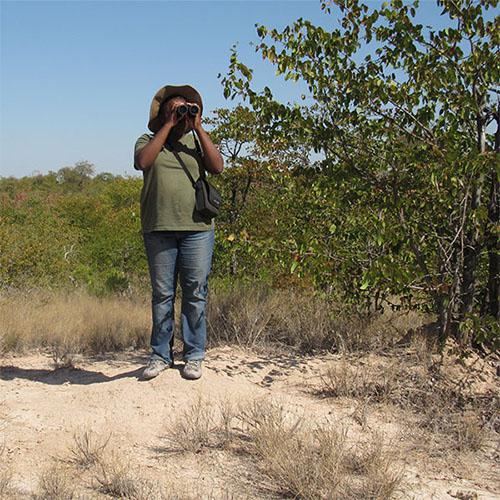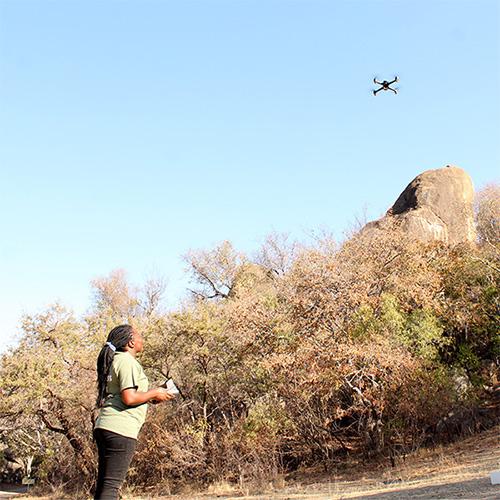Kudzanai Sandra Dhliwayo
This study aims to understand the status, breeding ecology and threats to White-headed and Lappet-faced Vultures in Gonarezhou National Park, Zimbabwe. I propose to map nest sites, study nesting success, and determine nest site and habitat characteristics of the two species. I will also examine the population structure of White-headed Vultures as age plays a vital role in breeding success. Finally, I will evaluate two potential risk factors: electrocution and community attitudes towards vultures.

This study aims to understand the status, breeding ecology and threats to White-headed and Lappet-faced Vultures in Gonarezhou National Park, Zimbabwe. I propose to map nest sites, study nesting success, and determine nest site and habitat characteristics of the two species. I will also examine the population structure of White-headed Vultures as age plays a vital role in breeding success. Finally, I will evaluate two potential risk factors: electrocution and community attitudes towards vultures.

Nests will be located with road and walking surveys and by enlisting reports from park rangers. At nesting sites I will record nest tree species, tree diameter at breast height (dbh) and tree height. Forest cover, landscape, tree density and distance to nearest river will be calculated using a GPS and GIS. All nest tree attributes will be compared to five random trees selected within 500 m of each nest. Nest contents will be observed biweekly using a drone. Phenology will be calculated by counting backwards from observed chick sizes (Mundy, 1982; Hustler and Howell, 1988). Walking surveys will be conducted along powerlines in search of carcasses of electrocuted birds six times a year. I will identify and remove the carcasses, and check them for signs of electrocution. Numbered wing tags and satellite telemetry devices will be put on six Lappet-faced Vultures in the study area to determine their home ranges. Finally, questionnaires will be distributed to individuals in the communal areas surrounding the study area. A series of open–ended questions about traditional beliefs and uses of vulture parts will be asked from which locals’ attitudes towards vultures will be assessed.